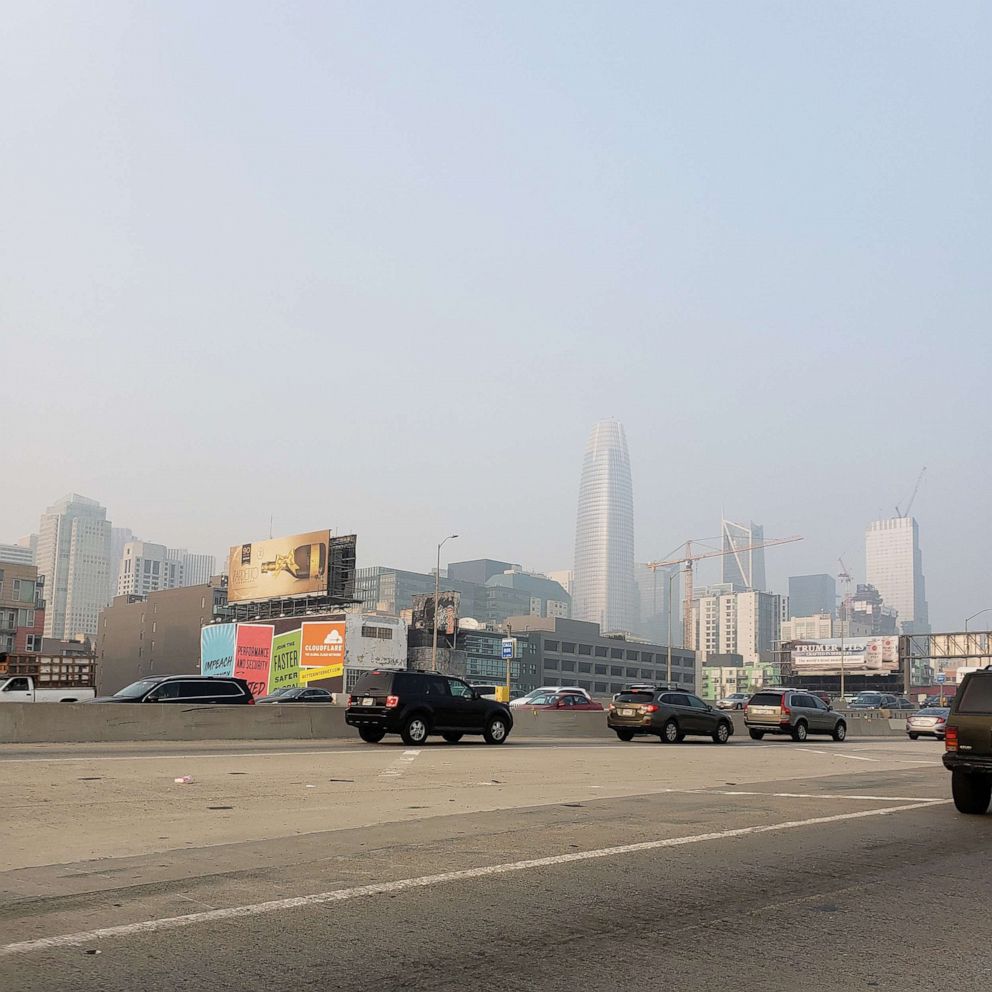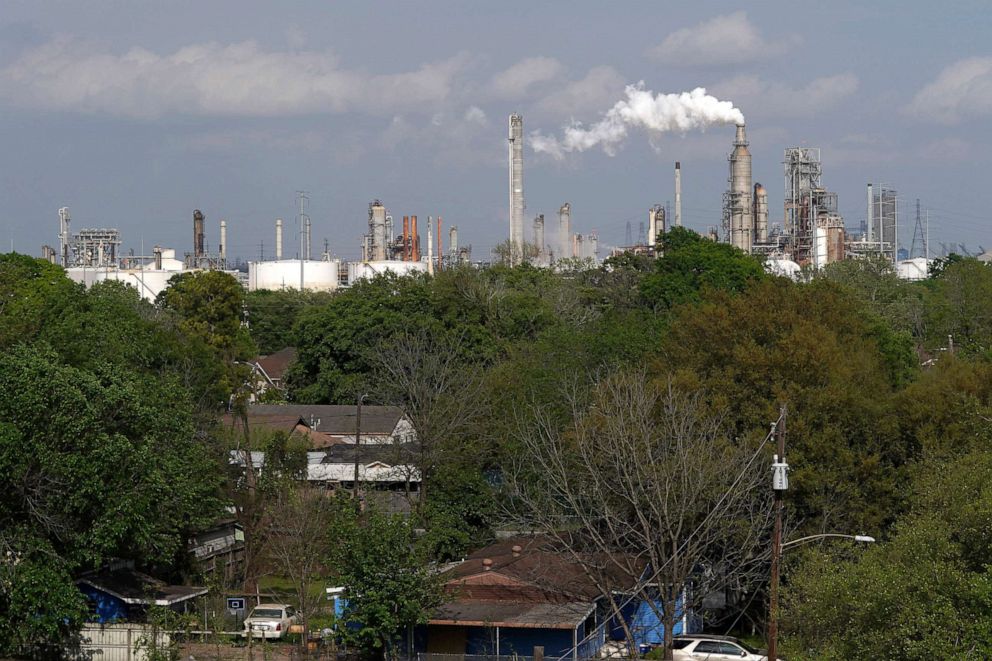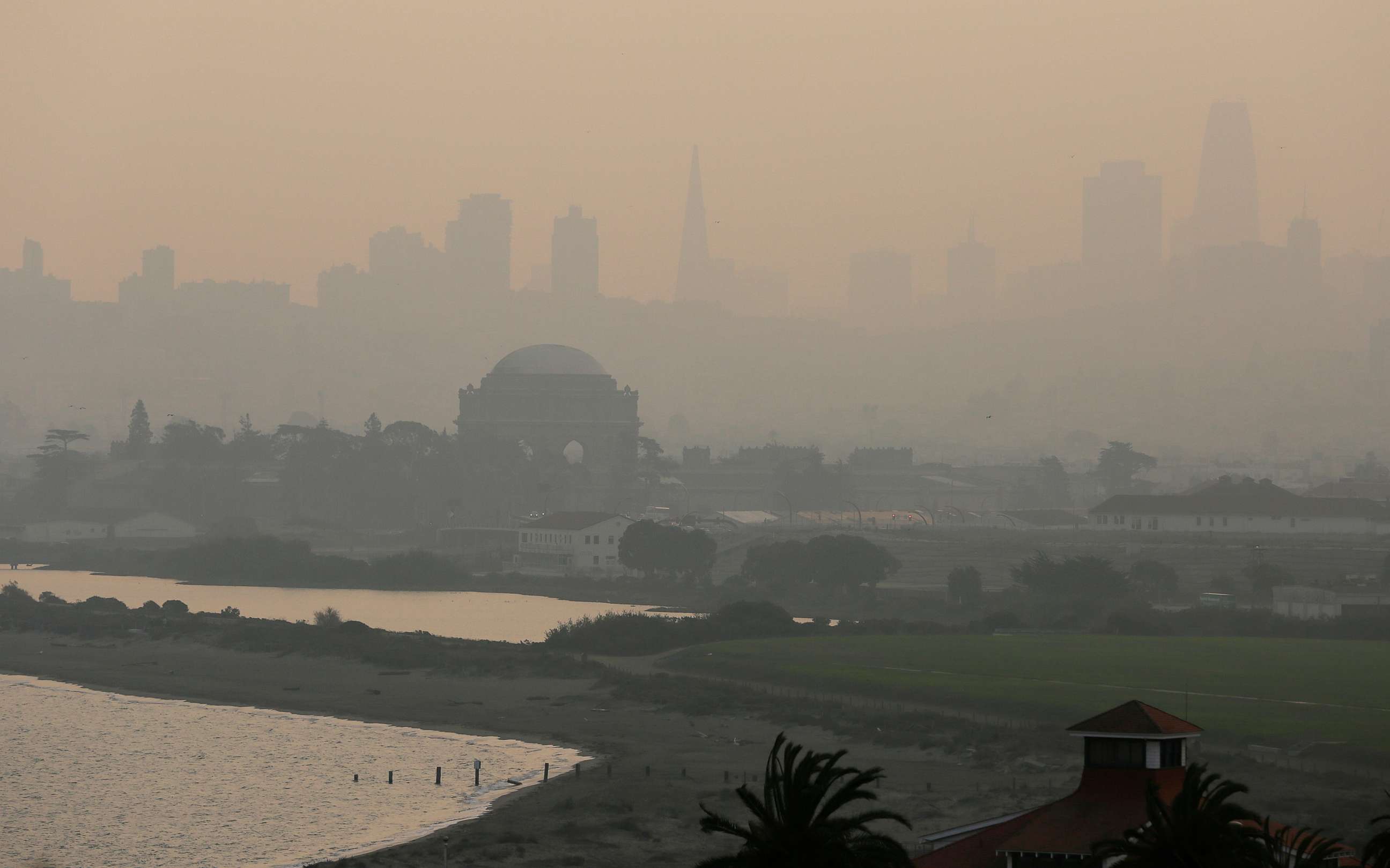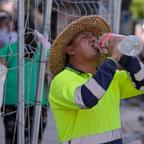Climate making air pollution worse, almost half of Americans exposed to unhealthy levels: Report
The American Lung Association says the numbers have gone up in recent years.
Almost half of Americans live in communities with unhealthy levels of air pollution, according to the American Lung Association, as the country continues to grapple with a respiratory virus that has brought more attention to the impact of air pollution on people'shealth.
The American Lung Association's "State of the Air" report found that 150 million Americans -- 45.8% of the population -- live in counties with unhealthy levels of ozone or tiny particle pollution -- essentially soot or smog. The numbers have increased in the past three reports.
"What we're seeing is an actual increase in the number of people breathing unhealthy air in this year's report compared to last year's report. And that is a result, we believe, of climate change. And also lack of enforcement and compliance by the U.S. EPA of the Clean Air Act," said Paul Billings, senior vice president of advocacy for the American Lung Association.
"It shows we can't take clean air for granted and that climate change is making the job of cleaning the air harder and it's putting health burdens on the American people right now," he added.
A recent study from researchers at Harvard University found a link between high exposures to air pollution and pre-existing conditions that contribute to more severe outcomes from the novel coronavirus, raising more concern about the long-term impacts of pollution on public health.

The report specifically looked at two types of air pollution regulated by state and federal governments: ozone released by vehicles, power plants, chemical and industrial facilities, and tiny particles known as "particulate matter" that can get into the air from construction sites, wildfires and smokestacks.
Ozone is known to hurt lung function and worsen health conditions like asthma or bronchitis and particulate pollution can cause lung problems, heart attacks and contribute to premature death.
The Environmental Protection Agency, the federal entity charged with regulating hazardous air pollutants and protecting human health and the environment, called the Lung Association's report "pessimistic" and the methodology problematic in a statement. The agency said the report's methodology does not take into account the challenges different cities and states face in cleaning up pollution and doesn't recognize progress made over the years.
"EPA methods for determining air quality, which are based on the Clean Air Act and the latest science, show continued improvements in measures of U.S. air quality in recent years and into the future," a spokesperson said in a statement.
The EPA estimates, using its own methodology, that despite significant improvements in levels of most regulated pollutants, approximately 137 million people lived in areas with pollution above the legal levels in 2018, according to the agency's website.
Catherine Flowers, a field activist in Houston with the advocacy group Moms Clean Air Force, says the concern about air pollution adds another level of anxiety as she watches friends and colleagues impacted by the COVID-19 virus in her home city of New Orleans.
Flowers said she wants to see more accountability and awareness of the health problems associated with air pollution, especially among people with low incomes and in communities of color that are impacted the most.
"Climate and air is an environmental justice issue and it's -- it's literally tied to every social ill. I don't think we've had the words before because, again, we've always focused on, you know, the most immediate issues. But the truth is, it's a thread that's woven throughout the cloth of every kind of -- every kind of social service work we do," she said.

She said it can sometimes be difficult to get communities and officials to focus on issues like air pollution while in the midst of another crisis, but that she hopes the concerns about the disproportionate impact of both air pollution and COVID-19 on certain groups galvanize some action on the issue.
"I remember after Hurricane Katrina and even after Harvey, you know, the news and just community leaders recognize that the storm pulled the veil off of what the issues were," she told ABC News.
"And so COVID once again demonstrates that we have real issues that need to be addressed. We can't keep ignoring the problem."
Three of the worst cities are all in California, according to the report, largely because of wildfire smoke and rising temperatures due to climate change that exacerbate pollution. The National Oceanic and Atmospheric Administration expects 2020 to be one of the 10 warmest years on record, if not one of the five warmest years.
Billings said the upward trend shows that we are already seeing the public health impacts of climate change.

"Climate change creates the conditions to form both ozone and particle pollution, makes the job of cleaning up that pollution that much harder and we're seeing clear evidence in our report of the impact of climate change, with more Americans exposed to more pollution on more days as a result of the immediate impacts we're seeing of a warming planet," Billings said.
To learn more about U.S. air quality, the EPA website AirNow.gov contains air pollution forecasts on the local level and historical air pollution data.
